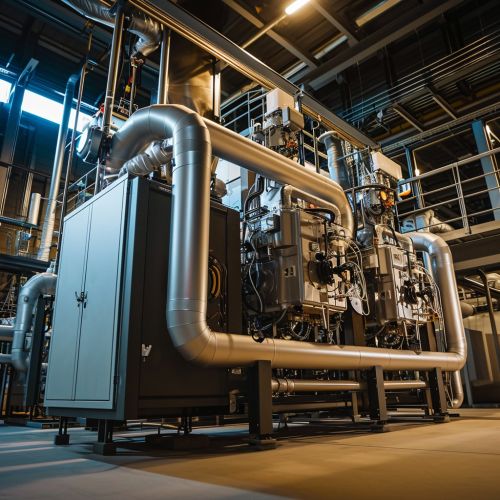Linear accelerator
Introduction
A linear accelerator, also known as a linac, is a type of particle accelerator that accelerates charged subatomic particles or ions to a high speed by subjecting them to a series of oscillating electric potentials along a linear beamline. The design of a linac depends on the type of particle that is being accelerated: electrons, protons, or heavier ions.
History
The concept of a linear accelerator was first proposed by Rolf Widerøe, who in 1928 demonstrated linear acceleration of potassium ions. However, the first practical linac was developed by Luis Alvarez in 1945, who used the device to accelerate electrons. Alvarez's design, known as the Alvarez linac, is still used today in many medical and industrial applications.
Design and Operation
A linear accelerator consists of a series of radio-frequency (RF) cavities, placed end-to-end along the beamline. Each cavity is essentially a resonant circuit that oscillates at a specific frequency, determined by the length of the cavity and the speed of light. The cavities are powered by an external RF power source, which drives the oscillations.
When a charged particle enters a cavity, it is subjected to the oscillating electric field within the cavity. If the frequency of the oscillations is properly synchronized with the speed of the particle, the particle will always encounter an accelerating field, and will thus gain energy as it passes through the cavity. This process is repeated in each successive cavity, allowing the particle to gain a large amount of energy over a relatively short distance.
The beamline of a linac is typically straight, but it can also be bent into a circular or spiral shape in order to fit within a compact space. This is often done in medical linacs, which need to be small enough to fit within a hospital room.
Applications
Linear accelerators have a wide range of applications, from fundamental research in particle physics to practical uses in medicine and industry.
Particle Physics
In particle physics, linacs are used to accelerate particles to high energies for use in experiments. The world's largest linac, the SLAC linac, is 3 kilometers long and can accelerate electrons to energies of 50 GeV.
Medicine
In medicine, linacs are used in radiation therapy to treat cancer. A medical linac accelerates electrons to high energies, then uses a target to convert the electrons into high-energy x-rays. These x-rays can be precisely targeted at a tumor, destroying the cancerous cells while sparing the surrounding healthy tissue.
Industry
In industry, linacs are used for a variety of purposes, including radiation sterilization of medical equipment, food irradiation, and non-destructive testing of materials. Industrial linacs typically operate at lower energies than those used in particle physics or medicine, but they are still capable of producing a significant amount of radiation.


Future Developments
Advances in technology and materials science are leading to the development of new types of linear accelerators. One promising area of research is the development of laser-driven linacs, which use powerful lasers to accelerate particles. These devices could potentially be much smaller and cheaper than conventional RF linacs, opening up new possibilities for particle acceleration.
Another area of research is the development of superconducting linacs, which use superconducting RF cavities to achieve higher acceleration gradients. This could allow for the construction of more powerful linacs, capable of reaching higher energies.
